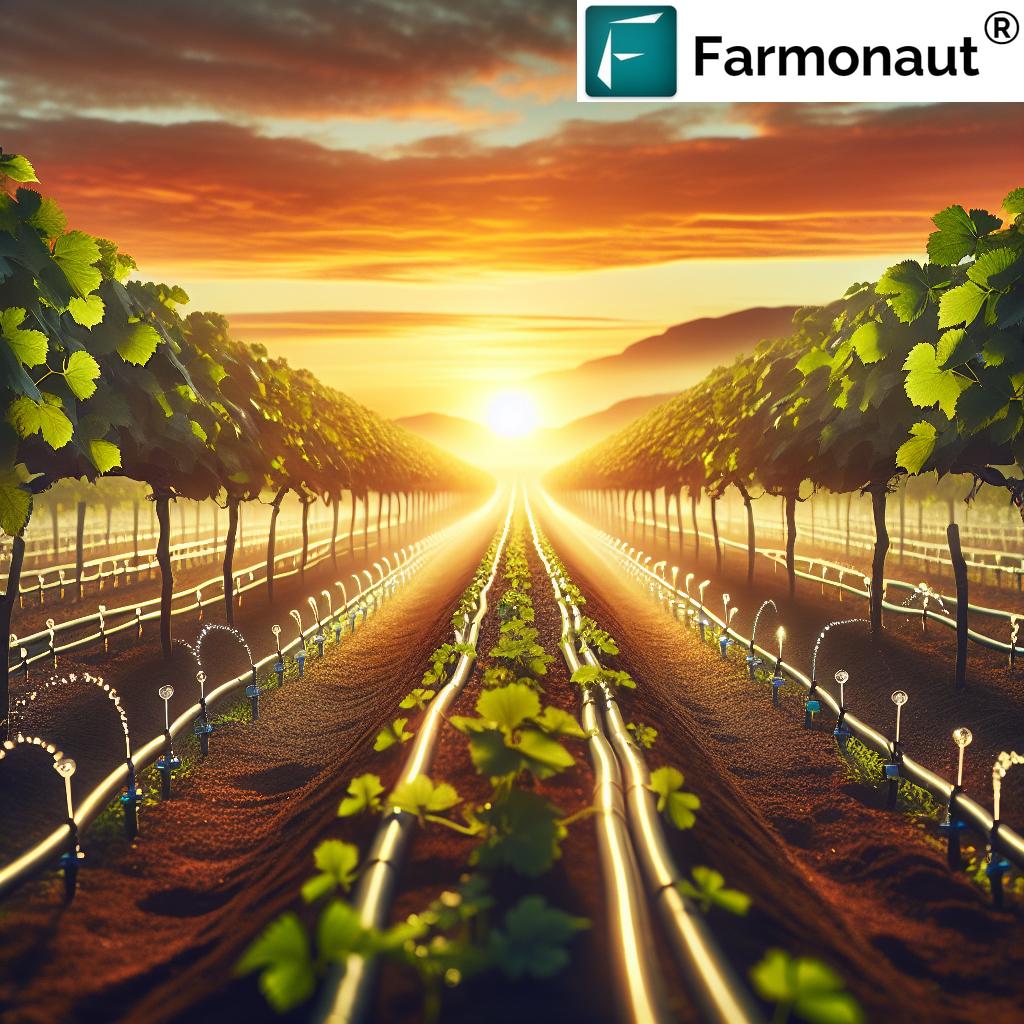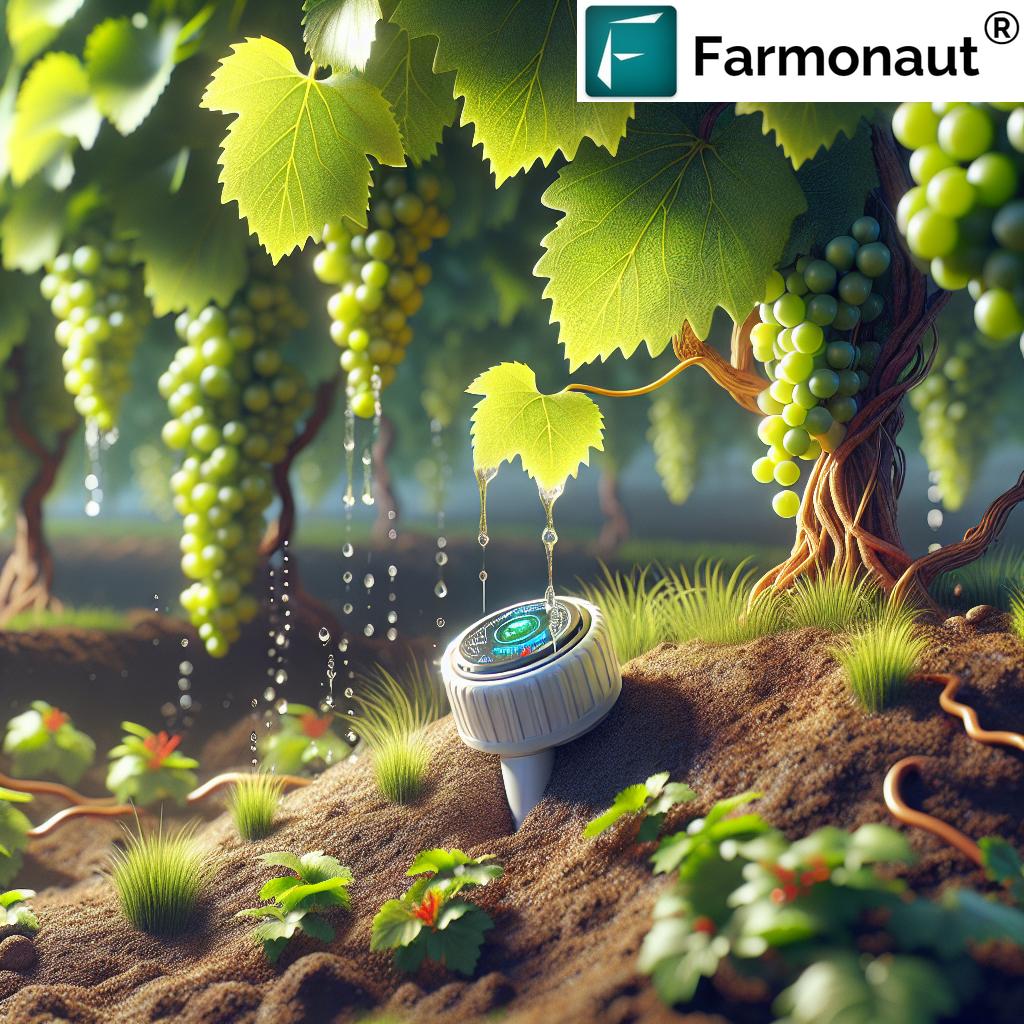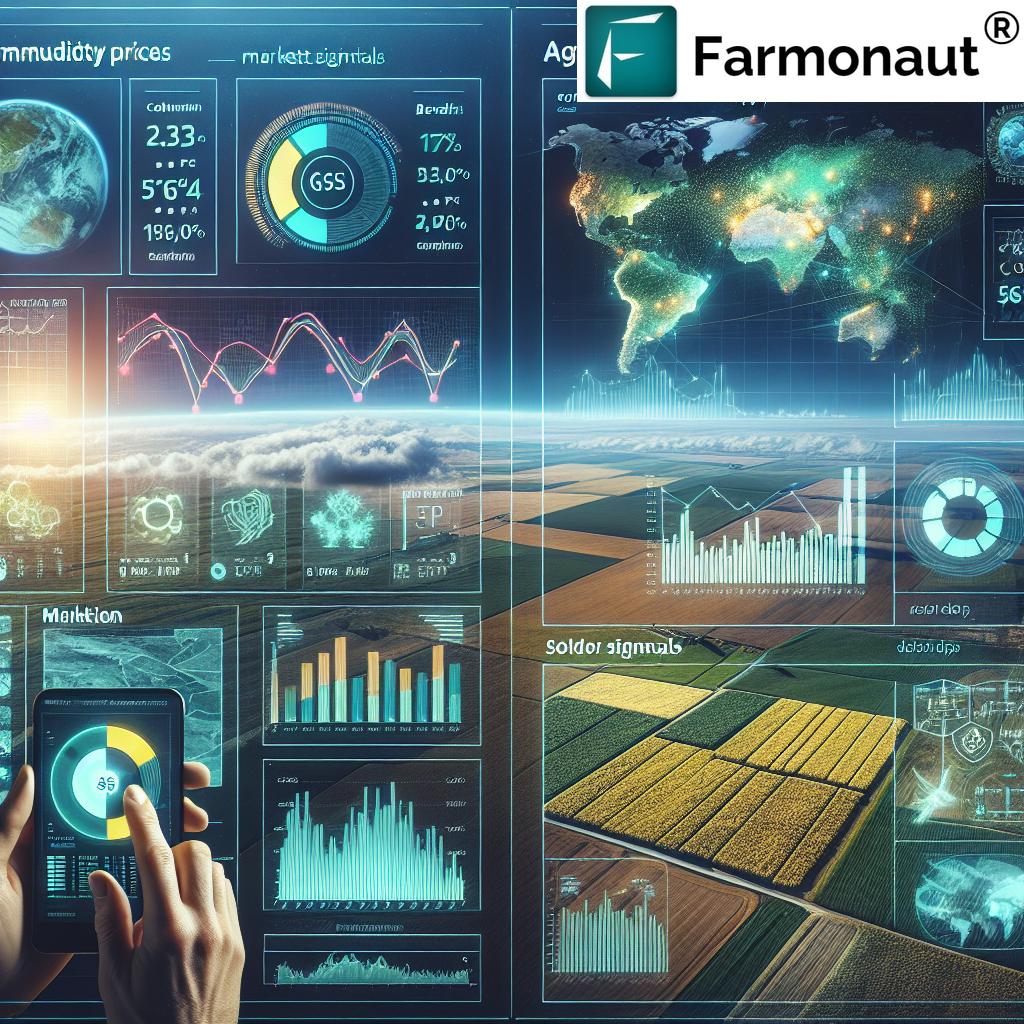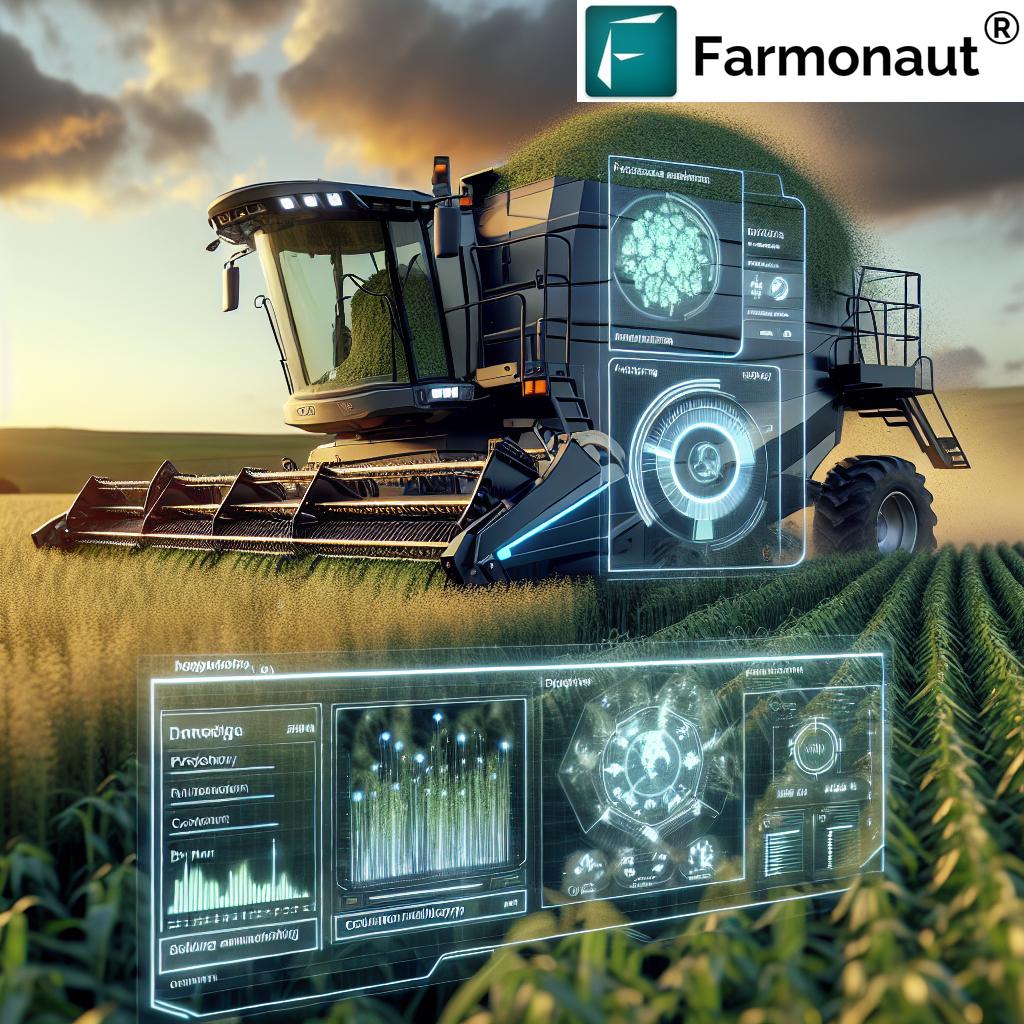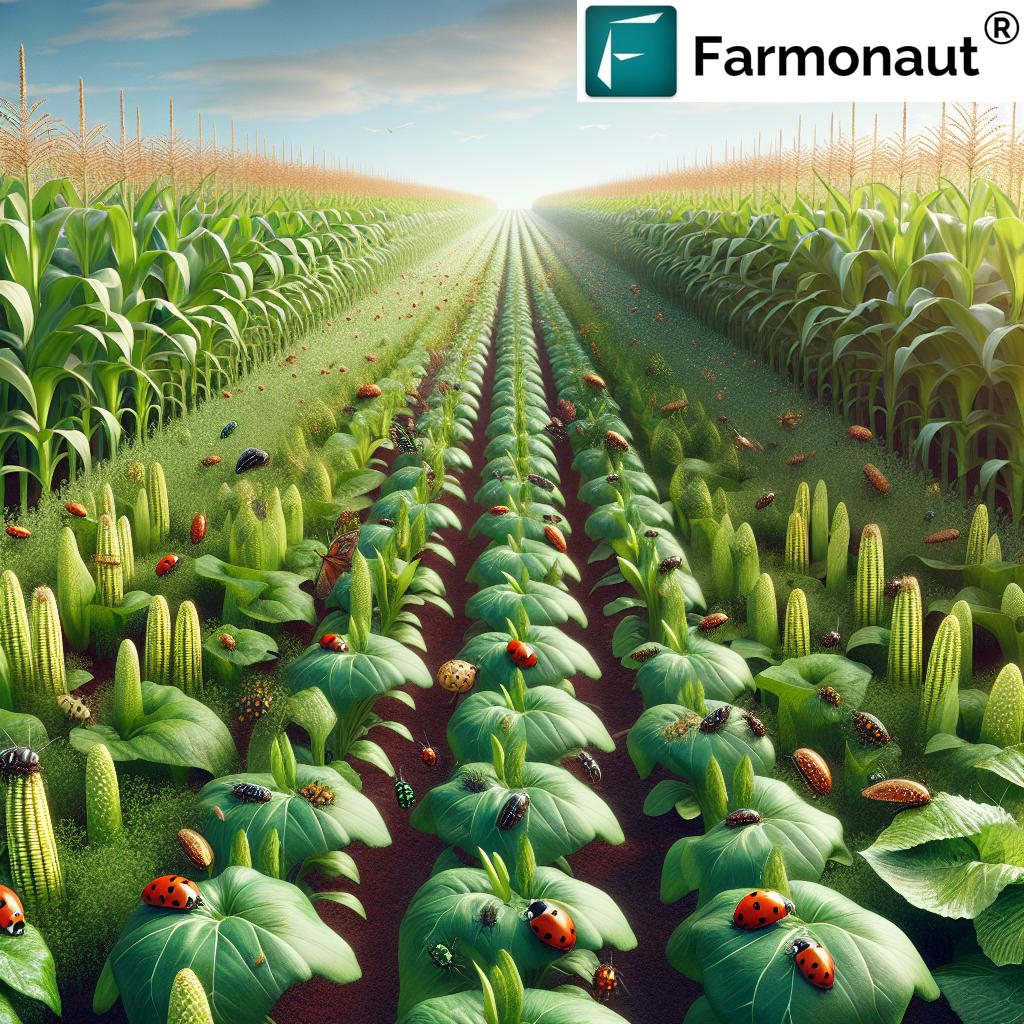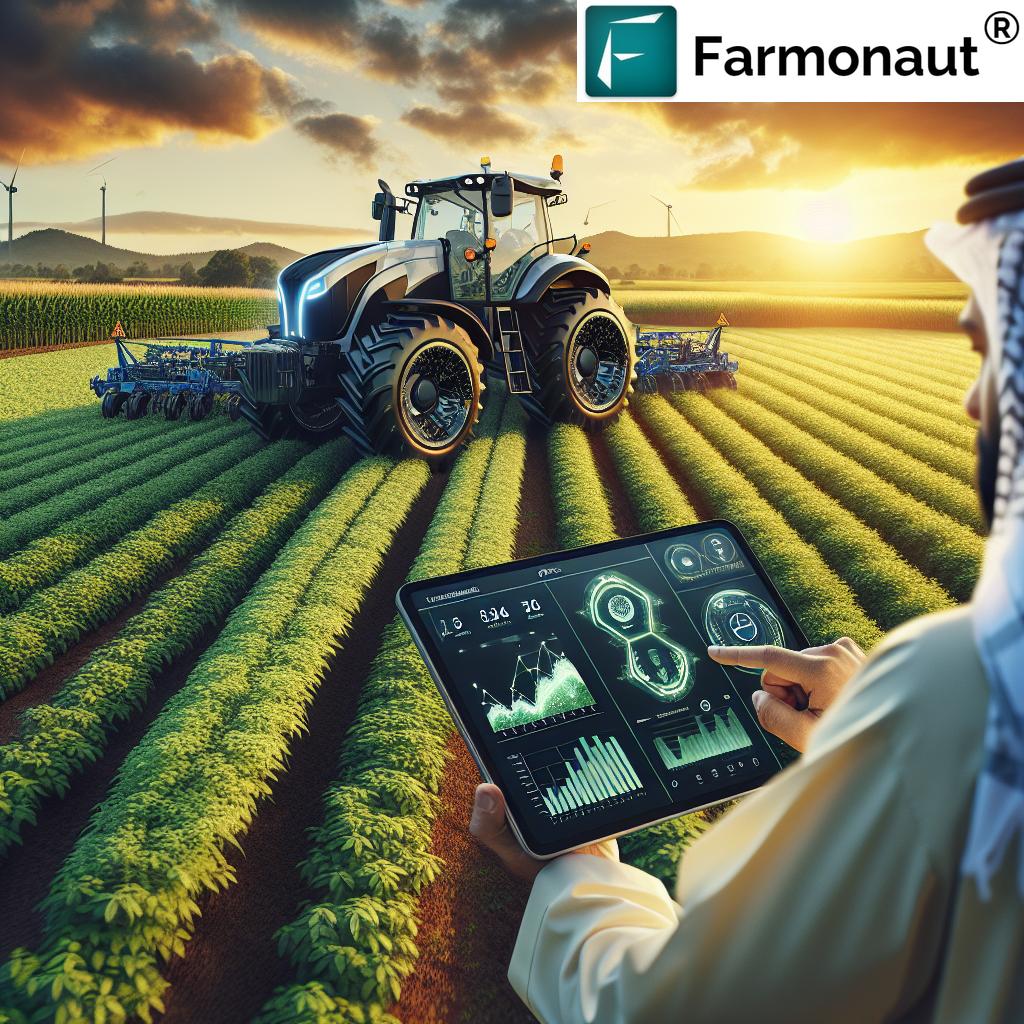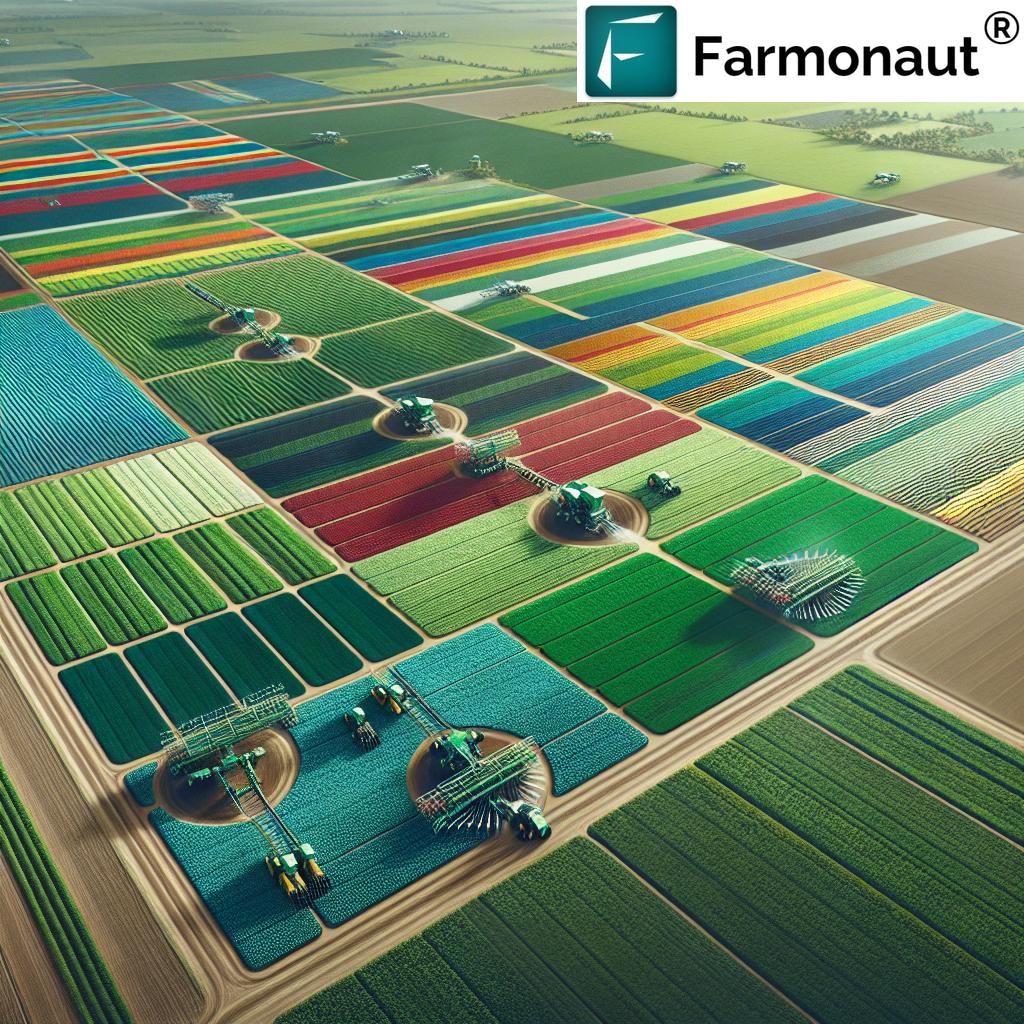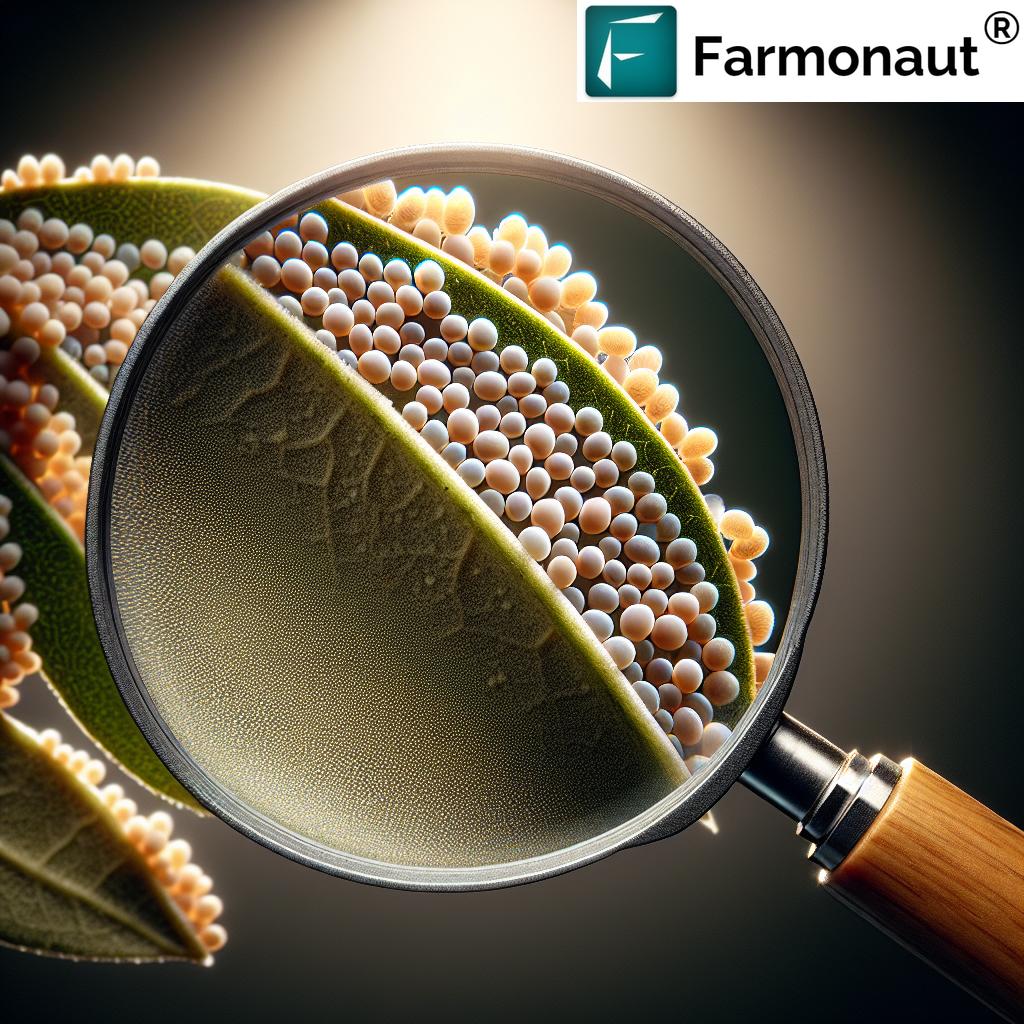Vineyard Irrigation Secrets: 7 Hacks for Lush Vines!
“Drip irrigation can reduce vineyard water use by up to 50% compared to traditional flood methods.”
Table of Contents
- Introduction: Unlocking the Secrets to Successful Vineyard Irrigation
- Vineyard Irrigation Methods Every Grower Should Know
- 7 Vineyard Irrigation Hacks for Lush Vines
- Advanced Techniques and Technologies for Vineyard Water Management
- Irrigation Scheduling for Grapevines
- Farmonaut: Revolutionizing Vineyard Water Management
- Comparative Table: Vineyard Irrigation Methods at a Glance
- Regulatory Considerations: Vineyard Irrigation Around the World
- Frequently Asked Questions
- Conclusion: Towards Smart, Sustainable, and Profitable Viticulture
Introduction: Unlocking the Secrets to Successful Vineyard Irrigation
Welcome to the ultimate guide on vineyard irrigation secrets—the essential strategies every grower needs to nurture healthy, high-quality vines while mastering water efficiency. Vineyard irrigation is much more than simply delivering water to plants; it’s a science and an art form that, when done correctly, directly impacts grapevine health, fruit quality, and, ultimately, the excellence of your wine production.
In our increasingly climate-challenged world, smart vineyard water management isn’t just good practice—it’s a necessity. By exploring proven irrigation methods like drip irrigation, deploying soil moisture sensors in viticulture, and leveraging data-driven scheduling, we can ensure that our vines receive precise application of water, optimizing their health and resilience, improving fruit quality, and making the best use of every drop.
We’ll cover classical and modern techniques, discuss their relative advantages and challenges, highlight actionable hacks for maximizing results, and reveal how innovations—like those from Farmonaut—are pushing the boundaries of sustainable vineyard management. Let’s dig deep into what it takes to grow not just grapes, but vibrant, lush vines that produce truly exceptional wines.
Vineyard Irrigation Methods Every Grower Should Know
Selection of the right irrigation technique can be the difference between a thriving vineyard and one that struggles with poor yields, disease pressure, or excessive water waste. Here, we break down the major vineyard irrigation methods—including their working principles, strengths, and limitations—so we can make informed choices for any vineyard situation.
Drip Irrigation for Vineyards: Precision at Its Finest
Drip irrigation is the gold standard in many top wine regions for good reason. It delivers water directly to the root zone of each vine via a network of tubes and emitters. This minimizes evaporation, reduces competition from weeds, and cuts down on erosion and disease risk by keeping the surface soil dry.
- Control: Adjust water amounts precisely for each zone or block, matching vine demands as they change through the season.
- Fertigation: Integrate fertilizers into the system for direct, timely application to the roots, enhancing vine nutrition and berry quality.
- Efficiency: Drip can reduce vineyard water use by up to 50% versus older methods (source), which is essential for sustainable management.
While the initial setup cost can be higher than traditional systems, the return in better fruit quality, reduced water waste, and improved vineyard health makes drip irrigation for vineyards a best practice worldwide.
Sprinkler Systems in Vineyards: Broad Coverage, Specific Risks
Sprinkler irrigation utilizes overhead sprinklers to distribute water uniformly across the vineyard.
- Advantages: Fast water application, can assist with frost protection in cold climates, and is relatively easy to install over established vineyards.
- Challenges: Elevated evaporation losses, increased leaf wetness (which can raise fungal disease risks), and less precise control compared to drip.
To counter such challenges, many vineyards combine sprinkler systems with monitoring tools to achieve more optimal scheduling.
Subsurface Irrigation Techniques: Optimizing Water Use Below Ground
With subsurface irrigation techniques, we deliver water directly below the soil surface using buried pipes or drip lines.
- Reduces evaporation losses dramatically.
- Improves efficiency by targeting the root zone precisely.
- Limits weed growth, as surface soil remains drier.
While it demands experienced setup and regular monitoring to prevent clogging or uneven distribution, subsurface methods are increasingly popular in regions where water conservation is critical (source).
Flood Irrigation Explained: Traditional Practice With Modern Implications
Flood irrigation involves covering the vineyard block with a shallow layer of water, allowing deep saturation of the soil.
- Pros: Useful for very permeable soils and where water is not limited.
- Cons: Substantial water waste, increased disease risk, potential for root zone stress due to over-hydration, and a lack of precise control.
In drought-prone regions or where water efficiency and grape quality are top priorities, more advanced methods are increasingly preferred (source).
Sub-Irrigation: Harnessing Groundwater for Lush Vineyards
Sub-irrigation uses carefully managed groundwater levels to irrigate vines by capillary rise.
- Ideal for vineyards in regions with accessible water tables.
- Low maintenance once properly established.
- Preserves the natural landscape, as there’s little visible irrigation hardware cluttering the block.
However, this method requires a controlled environment and is not applicable everywhere. (source)
7 Vineyard Irrigation Hacks for Lush Vines
After understanding the broad landscape of methods, let’s dive into our hand-picked, actionable hacks—for everyday growers and estate managers alike—that consistently deliver optimal vineyard health and production results:
- Invest in Drip Irrigation – Make the move to drip systems for targeted application in the root zone. Tie in fertigation for nutrient delivery, which boosts both growth and fruit quality.
- Leverage Soil Moisture Sensors in Viticulture – Install sensors at varying depths and across different vineyard blocks. Analyze live moisture content data to schedule irrigation just when and where it’s needed, not a moment or liter before. “Soil moisture sensors help vineyards achieve up to 30% higher water efficiency through precise irrigation scheduling.”
- Embrace Smart Scheduling Tools – Use evapotranspiration (ET) data, satellite monitoring apps (like Farmonaut), and predictive analytics to develop irrigation schedules responsive to live weather and plant needs.
- Practice Partial Rootzone Drying (PRD) – Alternate irrigation between each vine’s root halves, encouraging physiological responses that can enhance grape flavors and fruit quality (but always monitoring to prevent excessive stress).
- Integrate Pressure Regulators and Flow Meters – These are essential for every modern network, ensuring even distribution and alerting you to leaks or emitter blockages.
- Monitor Plant Stress Directly – Use infrared thermometers, pressure bombs, and satellite indices like NDVI (accessible within Farmonaut!) for early detection of water stress and fine-tuning application.
- Record, Analyze, Adapt – Keep detailed logs of all irrigation events, yields, and disease outbreaks. Use this data to refine future management for ever-better results.
Unlock Satellite-Powered Vineyard Monitoring
For growers serious about reducing water waste in vineyards and optimizing every input, Farmonaut offers a one-stop platform to view soil moisture, plant health, and localized advisories. Use it on Android, iOS, or Web.
Advanced Techniques and Technologies for Vineyard Water Management
As global competition and resource challenges mount, modern vineyards turn to intelligent, tech-driven systems for the ultimate in water efficiency and quality. Let’s examine how integrating environmental data and smart scheduling raises the bar across the wine world.
Evapotranspiration-Based Irrigation: Tapping Real Environmental Data
Evapotranspiration (ET)-based irrigation calculates a vine’s exact water requirements using real environmental factors—temperature, humidity, wind, solar exposure—yielding much tighter control than rigid, calendar-based systems.
- Implementation: Combine ET calculations with soil moisture sensors and/or satellite imaging for a comprehensive real-time water demand picture.
- Result: Irrigate precisely to plant need, enhancing vine health while reducing water waste.
Farmonaut includes live weather and crop health analytics to help automate this process, bringing microclimate intelligence to every block (source).
Partial Rootzone Drying (PRD): Maximizing Flavors and Water Use
The Partial Rootzone Drying (PRD) technique is a cutting-edge strategy to encourage vines to boost fruit quality and flavor concentrations without unnecessary stress.
- Irrigate only half of a vine’s roots at a time, alternating sides—for example, one week on the north side, the next on the south.
- Physiological responses signal the plant to concentrate resources in grape clusters, increasing sugars, color, and aromatic intensity without harming vegetative growth if properly controlled.
PRD is best managed with sensors and satellite monitoring (such as Farmonaut offers) to ensure stress does not cross into negative territory (source).
Precision Decisions with Farmonaut’s Carbon Footprinting Tool
Sustainable irrigation isn’t just about water—it’s also about your environmental footprint. With Farmonaut’s Carbon Footprinting, vineyards can monitor, manage, and reduce greenhouse gas emissions, aligning precision farming with sustainability mandates. Discover more here.
Irrigation Scheduling for Grapevines: How, When, and How Much?
Irrigation scheduling for grapevines ensures the best grape quality and health while minimizing water waste. Today’s best practices mix traditional wisdom with technology for tomorrows’ efficiency.
The Water Balance Technique
Analyze weather data, soil type, and moisture content to estimate vineyard needs, offsetting evaporation losses. This method requires careful recordkeeping and constant data input—a job made easier when sensors and satellite apps (see Farmonaut) automate measurements and balances.
Plant Monitoring
Track irrigation requirements by observing the vines themselves: measure leaf turgor pressure, trunk diameter, canopy temperature, or use NDVI indices. These techniques allow us to respond to real vine stress and growth needs.
Soil Moisture Sensors in Viticulture: Real-Time, Accurate Insights
Soil moisture sensors measure levels within the root zone at various depths, providing live feedback to guide application timing and volumes. This approach can improve vineyard water efficiency by up to 30% (source). Farmonaut’s satellite-based platform aggregates this information into a single, easy-to-understand dashboard—a game changer for both seasoned and novice managers.
Boost Traceability with Blockchain
Water-efficient vineyards stand out in today’s marketplace. Take it further with Farmonaut’s Product Traceability—combine water management records and sustainability efforts on blockchain to prove your high standards. See how it works here.
“Soil moisture sensors help vineyards achieve up to 30% higher water efficiency through precise irrigation scheduling.”
Farmonaut: Revolutionizing Vineyard Water Management
Modern growers can transform their irrigation approach overnight with Farmonaut, bringing together advanced satellite-based crop health monitoring, AI-powered advisories, blockchain traceability, and powerful resource management tools. Here’s how Farmonaut helps vineyards thrive:
-
Real-Time Crop Health and Soil Moisture Tracking:
Instantly visualize vine health via NDVI satellite images, with overlays for soil moisture levels. Act fast whenever stress appears, instead of reacting after problems escalate. -
Data-Driven Irrigation Scheduling:
Use centralized data from sensors, satellite streams, and expert AI to generate optimal irrigation plans—maximizing quality, minimizing waste. -
Resource Management:
Oversee all your irrigation systems and equipment, monitor fleet movement, and organize field operations from one digital hub. Streamline costs and boost efficiency (Fleet Management details). -
Transparent, Secure Traceability:
Document every irrigation event, input, and harvest on blockchain for auditable supply chains and consumer trust. -
Flexible Access via API:
Plug Farmonaut’s API and API Developer Docs directly into your custom apps or existing agri-software systems.
Whether working solo or managing hundreds of hectares, grow smarter, not harder—explore large scale farm management with Farmonaut.
And for plantations, forests, or diversified estate crops, unlock tailored advice and monitoring on the full platform.
Comparative Table: Vineyard Irrigation Methods at a Glance
| Irrigation Method | Technology Level | Estimated Water Savings (%) | Impact on Grape Quality (1-5) | Initial Setup Cost |
|---|---|---|---|---|
| Drip Irrigation | Advanced | 40–50% | 5 | Medium–High |
| Sprinkler Systems | Basic–Intermediate | 15–25% | 3 | Medium |
| Subsurface Irrigation | Advanced | 35–45% | 4 | High |
| Flood Irrigation | Basic | 0–10% | 2 | Low |
| Soil Moisture Sensors | Advanced | ~30% | 5 | Medium |
| Evapotranspiration-based Scheduling | Advanced | ~30–40% | 5 | Medium |
| Partial Rootzone Drying (PRD) | Advanced | 25–35% | 5 | Medium |
Regulatory Considerations: Vineyard Irrigation Around the World
Not all regions grant free rein over irrigation practices. Several world-class wine-growing locations, such as those under French AOC/AOP controls, severely limit or prohibit irrigation to protect the expression of local terroir and maintain wine quality.
- Timing & Quantity: Even where allowed, regulations often restrict irrigation periods and total water application—only granting exceptions during drought years or emergencies.
- Compliance: Strict recordkeeping and proof of compliance may be required. This is another arena where blockchain traceability tools prove invaluable for both estate reputation and legal peace of mind.
- Global Sustainability Standards: Adopting sustainable practices is not just about compliance, but about meeting climactic, consumer, and regulatory demands for environmentally sound production.
Review your region’s guidelines before altering irrigation systems or schedules—and leverage Farmonaut’s recordkeeping and reporting tools to make compliance simple, remote, and auditable.
Frequently Asked Questions
1. How often should we irrigate vineyards?
The frequency depends on climate, soil type, grape variety, and growth stage. Use a combination of soil moisture sensors, weather data, and direct plant monitoring for the most accurate scheduling. This dynamic approach ensures vines only receive water when truly needed.
2. What’s the most water-efficient irrigation method?
Drip irrigation, especially when integrated with soil moisture sensors and live scheduling, yields 40–50% water savings over traditional methods.
3. Do soil moisture sensors require regular calibration?
Yes. Periodic calibration ensures reading accuracy and long-term reliability, especially as soils shift with seasons and use.
4. How can I track irrigation events and root zone health without being in the vineyard daily?
Platforms like Farmonaut leverage satellite monitoring, field sensors, and mobile apps to connect you with live vineyard status and send alerts if intervention is necessary.
5. Is PRD (Partial Rootzone Drying) risky for young or new vines?
PRD should be used mainly with established vines having robust root systems and under expert supervision. Overdoing it can cause stress and negatively impact overall growth in new plantings.
6. Where can I find more information about satellite-based farm management?
Directly through the Farmonaut app and web portal, or start with their comprehensive API documentation.
Conclusion: Towards Smart, Sustainable, and Profitable Viticulture
Mastery in vineyard irrigation ensures that every drop contributes to healthy vines, outstanding grape quality, and memorable wines. By embracing precise application through drip irrigation, leveraging soil moisture sensors and smart scheduling, and harnessing the latest technology platforms like Farmonaut, we make profound improvements—not only in yields and flavors but also in sustainability and compliance.
Whether on a small family patch or a sprawling estate, the future belongs to those who unite tradition with innovation and data-driven management. With tools like Farmonaut, modern viticulture isn’t just possible—it’s accessible, affordable, and a proven pathway to resilience and excellence in a changing world.
Ready to unlock the full power of technology for your vineyard? Explore Farmonaut solutions, try the platform, and keep your vines healthy, water-wise, and lush!
Need API access for custom integrations? Review our Farmonaut API or delve into the API Developer Docs.
For tailored guidance across plantations, access the advisory platform here.
Empower your vineyard, elevate your results, and irrigate your way to legendary vines—now and for generations to come.





